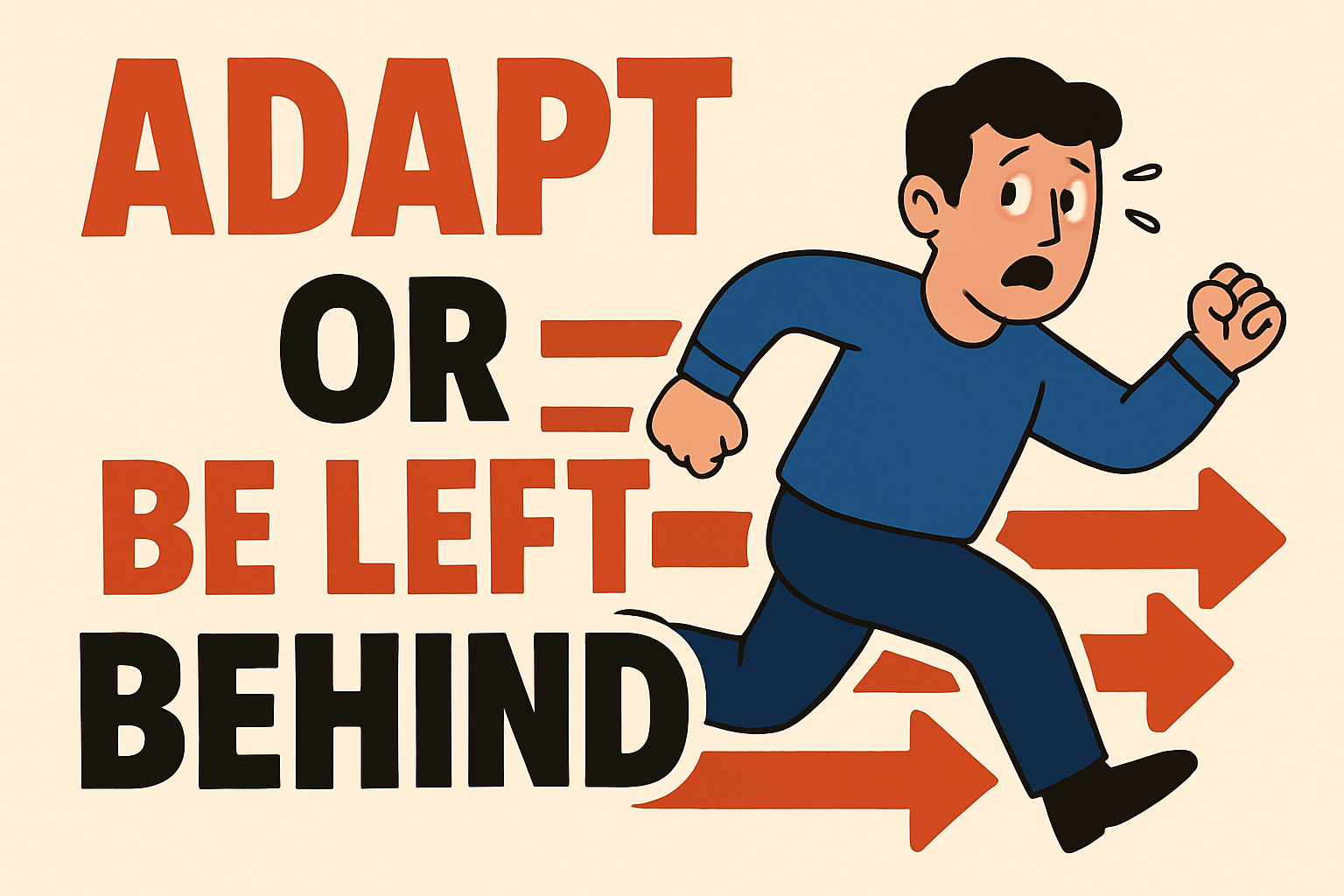Visual trends come and go. Social media algorithms shift. New tools emerge. Audience expectations evolve.
Those who cling too tightly to their comfort zones will gradually be left behind—not because they lack talent, but because they refuse to change.
This article invites you to reflect on the importance of adaptability in a creative career—and how flexible thinking can be one of the greatest strengths for designers, illustrators, and content creators today.
The Creative World = A Fast-Moving World
The creative world today moves at lightning speed.
What’s relevant this month may feel outdated just three months later. A new design trend can appear on your feed and become a client demand in mere weeks—or even days.
Change comes in many forms:
- Design tools: AI generators, Figma, Canva, Midjourney
- Content formats: From printed posters to Instagram carousels to short-form video
- Work environments: From studios to remote setups, freelancing, and digital nomad lifestyles
- Client expectations: Shifting from pure aesthetics to speed and business value
- Social media algorithms: From likes, to reach, to watch time—now saves and shares
This constant state of flux can feel overwhelming—especially when you’ve just adapted to the last wave of change.
But this is the nature of the field: it rewards those who evolve, not just those who excel in old ways.
If you can’t keep up, you won’t just miss opportunities—you’ll lose relevance.
It’s no longer enough to be good at what you do. You need to be relevant, responsive, and resilient.
What is “Creative Flexibility”?
Flexible thinking doesn’t mean being indecisive or lacking principles.
It means having the ability to:
- Adjust methods and approaches
- Learn new things without being defensive
- Embrace failure as part of growth
- Step outside your comfort zone
It’s about treating change not as a threat—but as a tool.
Flexibility = agile, not weak.
You can still preserve your identity while evolving with the times. In fact, the most iconic creators are not those who resisted change—they're the ones who adapted without losing their core values.
A flexible creative is someone who can move across mediums, styles, or even industries, yet still leave a recognizable imprint of their voice.
Real Examples of Adaptation in the Creative Industry
- From Print Design to Digital Design
- Senior designers who once focused on brochures and magazines now work on UI/UX, landing pages, or interactive social content. What was once static is now dynamic and optimized for engagement.
- Manual Illustrator to Digital Drawing
- From pen and paper to Procreate, Adobe Fresco, and AI upscaling—digital tools amplify traditional skills, not erase them.
- Designers Becoming Educators or Content Creators
- Many creatives now share their process on TikTok, YouTube, or online courses. Teaching has become an extension of their practice and a platform for brand-building.
- Traditional Agencies Pivoting to Hybrid Studios
- Agencies now combine branding, video, motion design, and influencer marketing. Survival depends on being multi-disciplinary, not just specialized.
Adapting doesn’t mean becoming someone else—it means expanding your toolkit to stay relevant.
What Holds Us Back from Adapting?
- Ego
- “I’ve been doing this for years. I don’t need to follow trends.”
- Experience is valuable—but the industry doesn’t care how long you’ve been around if you can’t solve today’s problems.
- Fear of Failure
- “What if I try something new and fail?”
- Failure is part of the process. Every expert you admire has failed more times than they can count.
- Perfectionism
- “I’ll wait until I’m really good before uploading or trying something new.”
- Perfection leads to paralysis. Progress is better than perfection. Share your work, get feedback, iterate.
- Comfort Zone
- “I’m doing fine. Why change?”
- Fine is fragile. What’s comfortable today may be irrelevant tomorrow. The most dangerous mindset is mistaking temporary success for lasting security.
Remember: It’s not the most talented who survive—it’s the most adaptable.
Strategies to Become a Flexible Creator
So how can you train yourself to adapt better? Start with small, intentional steps:
- Schedule Learning Time
- Dedicate 30 minutes a day to learn a new tool, watch tutorials, or take part in a design challenge. Make it a routine—like brushing your teeth.
Even something like “Tutorial Tuesday” or “Tool Friday” can build long-term habits.
- Create Experimental Projects
- Try new design styles, tools, or platforms. Use passion projects as a low-risk playground for creative growth.
Make a poster series in a new style. Record your process. Share your mistakes. These experiments often lead to breakthroughs.
- Find Mentors or Join Communities
- Surround yourself with learning-driven people. Join online forums, Discord servers, or local meetups.
- Learn from those a few steps ahead—and help those behind you.
- Update Your Portfolio Every 6 Months
- Your portfolio should reflect your current skill set—not just past work.
- If your best project is from three years ago, it likely no longer represents your potential.
- Evaluate Yourself Regularly
- Ask:
- What have I learned in the last three months?
- What tools or formats am I exploring?
- Am I still stuck in old habits?
Self-assessment isn’t about judgment. It’s about direction.
- Document Your Process
- Keep a journal or digital log of what you’re learning. Track tools, techniques, what works, and what doesn’t.
- This builds self-awareness and helps fight impostor syndrome.
Adaptation = Leveling Up
Adaptation isn’t just about staying afloat—it’s how you move forward.
The best creatives aren’t static. They evolve. They grow. They shape-shift.
With flexible thinking, you will:
- Discover new opportunities (educator, speaker, mentor)
- Reach wider audiences through relevant platforms
- Increase your credibility and perceived value
- Be more resilient in times of change or crisis



